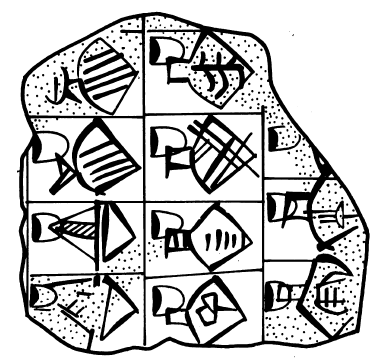Sumerian Lexical Lists and Sitchin's "Translations"
I have discussed this issue on my PaleoBabble blog, but wanted to summarize it here. Here's an excerpt of my comments:
As noted above, the ancient Mesopotamian scribes created dictionaries. Lists of words are a common feature among the thousands of Sumerian and Akkadian cuneiform tablets which have been discovered by archaeologists. Many are just groupings of common words, while others represent an inventory of the word meanings of the languages used in Mesopotamia. These “lexical lists”, as scholars call them, were indispensable to the 19th century scholars who deciphered the Sumerian and Akkadian texts, for they were used to compile modern dictionaries of these languages. Today all major lexical texts have been published in the multi-volume set, Materials for the Sumerian Lexicon, begun by Benno Landsberger in the 1930s. It is indeed a rare instance where ancient dictionaries of a dead language form the core of the modern dictionaries used by scholars of today. Such is the case for the ancient languages of Sumer and Akkad. Sadly, Mr. Sitchin neglects these resources.
To learn more about lexical lists, click here. The important point in all this is that Sitchin's translation of key terms, like Sumerian MU, conflict with the bilingual material of the lexical lists compiled by the Mesopotamian scribes themselves.
If you want to check the most up-to-date scholarly translations of Sumerian literature for evidence of Sitchin's "translations," or if you want to search a Sumerian word in these texts, go to the online Electronic Text Corpus of Sumerian Literature (ETCSL) maintained by Oxford University. You can click on "Anunnaki" in the navigation pane on the left to watch a video of Dr. Heiser's search for the term "Anunnaki" at the ETCSL website.
